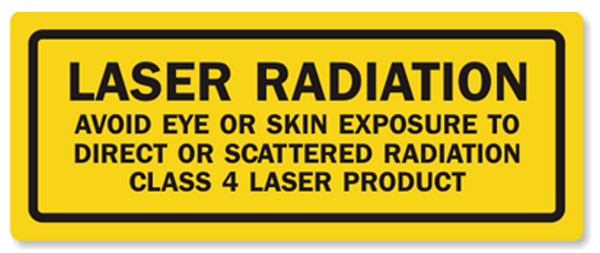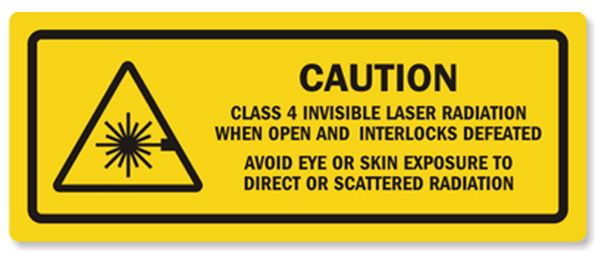Laser Safety
Laser systems are used across Toronto Metropolitan University for both research and teaching applications.
TMU’s Laser Safety Program, administered by the Environmental Health and Safety (EHS) laser safety officer, is designed to protect students, faculty, staff and visitors from the hazards associated with laser radiation. An overview of the Laser Safety Program can be found in the (google doc) Laser Safety Manual (external link) .
Getting started
Applying for a permit to work with class 3B and 4 lasers
All work conducted by university members with laser systems on university premises or under the control of the university requires a laser permit for class 3B and 4 lasers.
Complete a Laser Safety Permit application.
Registration and inventory
All users are expected to register their laser systems so that the university is familiar with and aware of its inventory. To register, complete the (google form) Laser Equipment Registration and Inventory Form (external link) . Following the registration, the laser safety officer will contact you to complete a risk assessment.
Setting up your lab to work with lasers
Setting up your lab is an important process in making sure that proper controls are in place to provide for a safe working and teaching environment. All users are expected to follow the steps below when setting up a lab. If it is your first time going through this process, we encourage you to contact the laser safety officer at ehs@torontomu.ca or 416-979-5000, ext. 554212 for support.
Training
Training is a key component of the Laser Safety Program and is mandatory for all users working with lasers, especially those which are classes 3B and 4.
Training is offered at the beginning of each term every year and is open to new and existing users. To sign up for training, please contact the laser safety officer at ehs@torontomu.ca or 416-979-5000, ext. 554212.
Follow the laser lab setup guidelines.
Setting up a laser lab at TMU
Quick step-by-step guide
Use this step-by-step guide when setting up your laser lab at TMU:
- Obtain laser specifications (e.g. laser class, power/energy per pulse, wavelength(s), beam diameter, beam divergence).
- Obtain the manufacturer’s user manual and send a copy to the laser safety officer.
- Register your laser(s) with the laser safety officer by completing the (google form) Laser Equipment Registration and Inventory Form (external link) .
- Complete a Laser Safety Permit Application.
- Complete training:
- Required for laser classes 3R (previously known as 3A), 3B and 4.
- Recommended for laser classes 1, 1M, 2 and 2M.
- Set up your lab:
- Determine and apply all necessary engineering and administrative controls.
- Purchase appropriate personal protective equipment (follow the information below).
- Arrange for a lab visit by the laser safety officer once setup is complete.
Laser class is provided by the manufacturer as is required by law. However, any in-house modifications made to a laser may change its classification (e.g. completely enclosing a laser system — where no beam is accessible at all — can bring a class 4 laser down to a class 1). Your user manual must contain this information. In addition, the laser itself must have a label on it that includes this information. The following are some examples of laser product labels:



Laser classification table
The laser classification table can be used as a general guide to classify laser systems. Please note that class 1 presents no hazard and class 4 presents the highest hazard.
There are many engineering and administrative controls which must be in place for class 3B and 4 lasers. The following tables provide some information on which measures are required, depending on whether the laser is class 3B or 4.
Engineering control measures table
Legend
R: Required
O: Optional
X: No requirement
NC: No further controls required
NHZ: Nominal hazard zone analysis required (performed with laser safety officer)
*Maximum Permissible Exposure (MPE): This is based on specific laser parameters as described in ANSI Z136.1 (2014) standards, such as wavelength, power or energy per pulse, beam diameter, beam divergence, collecting optics, etc.
Administrative and procedural control measures
Legend
R: Required
O: Optional
X: No requirement
NC: No further controls required
NHZ: Nominal hazard zone analysis required (performed with laser safety officer)
**Eye protection must have appropriate optical density (OD) for specific use parameters (e.g. wavelength, power or energy per pulse, beam diameter, beam divergence, collecting optics).
Additional resources
Safety glasses
To help users select the proper safety glasses when working with high-powered lasers, use the (google doc) Eyewear Materials Technology Selection for Lasers (external link) document as a guide.
Laser hazard analysis software
To determine your MPE, OD, NHZ and NOHD, use Easy Haz (external link) , an online calculation tool.
Recommended laser and laser safety equipment suppliers
The following suppliers are recommended for laser and laser safety equipment purchases. These purchases should be made in accordance with the university’s Purchasing Procedure. For assistance, please contact Purchasing Services.
BEAMSTOP'R Laser Impenetrable Custom Drapery Systems (external link)
Kentek Corporation Laser Safety Products (external link)
Lasermet Ltd. Laser Safety Solution (external link)
Laser Safety Industries (external link)
Laser Safety Systems (external link)
Laserglow Technologies (external link)
NoIR Laser Shield (external link)
Rockwell Laser Industries (external link)
SPERIAN Eye & Face Protection (available from Honeywell (external link) )
Legislation
The Laser Safety Program is in compliance by law with the Occupational Health and Safety Act (OHSA) (external link) and the American National Standard for the Safe Use of Lasers (ANSI Z136.1 – 2014).